Origins Of The Banana Fruit
The banana is a fruit that we all know and love, but do we know where it came from? The origins of the banana fruit can be traced back to Southeast Asia, specifically in the region that now covers Indonesia, Malaysia, and the Philippines. Bananas were first cultivated by humans as far back as 8000 BCE, according to archaeological evidence. The fruit was then brought to other parts of the world through trade and exploration, eventually becoming a staple crop in many countries.
Over time, different varieties of bananas were developed in different parts of the world. Some of the most common varieties include the Cavendish, which is the most widely grown type of banana globally, and the plantain, which is a staple food in many African and Caribbean countries. In addition to being a popular fruit for consumption, bananas are also used in other ways, such as in cooking and baking, and as a natural remedy for various ailments.
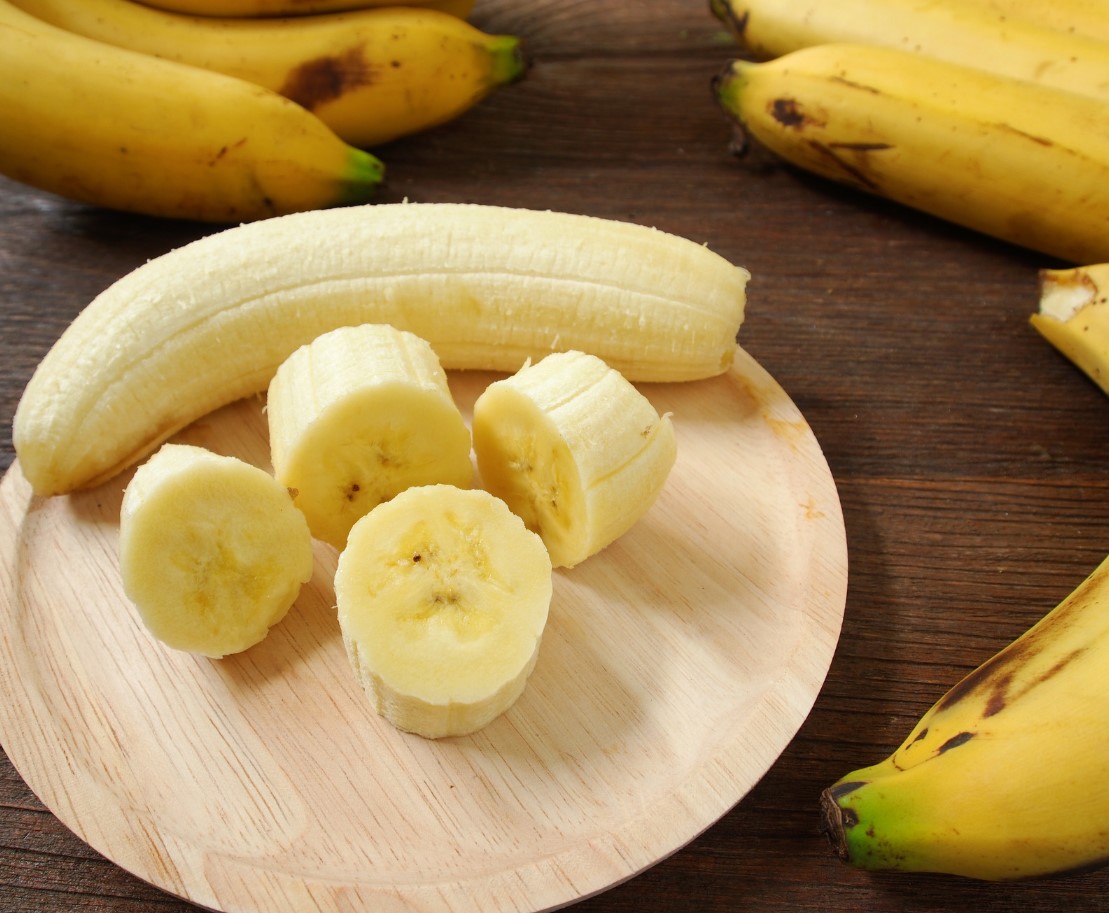
- Bananas are a great source of many essential nutrients, such as potassium and vitamin C. They are also low in fat and cholesterol, making them a healthy addition to any diet.
- Studies have shown that eating bananas can have many health benefits, such as improving digestion, lowering blood pressure, and reducing the risk of certain chronic diseases.
- One of the key nutrients found in bananas is potassium, which is important for maintaining healthy blood pressure and heart function. Bananas are one of the best sources of potassium in the diet.
Bananas are also a great natural energy booster, thanks to the carbohydrates and natural sugars they contain. They are a popular snack among athletes and people who are looking for a quick energy boost. Additionally, bananas have anti-inflammatory properties, which can help with a variety of health issues, such as arthritis and asthma.
| Country | Production (metric tons) |
|---|---|
| Ecuador | 6,069,970 |
| Philippines | 5,353,832 |
| India | 29,779,000 |
| China | 11,186,581 |
The production and cultivation of bananas plays an important role in many countries’ economies. In fact, bananas are one of the most widely produced and traded fruits in the world. However, there are also concerns about the environmental impact of large-scale banana production, such as deforestation and the use of pesticides and other chemicals.
Despite these challenges, the banana remains an important and beloved fruit around the world. From its humble origins in Southeast Asia to its current status as a global commodity, the banana has come a long way. Its versatility, nutrition, and cultural significance make it a fruit worth celebrating.
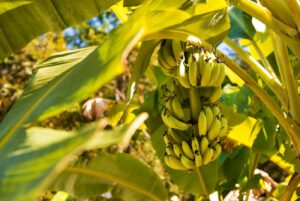
Nutritional Content Of Bananas
Bananas are one of the most loved and widely consumed fruits out there. They are not just delicious, but also packed with a range of nutrients that are essential for maintaining good health. In this blog post, we will take a look at the nutritional content of bananas and why they are considered such a healthy fruit.
1. Vitamins and minerals
Bananas are a rich source of vitamins and minerals. One medium-sized banana contains about 105 calories, 0.4 grams of fat, and 27 grams of carbohydrates. Bananas are also packed with essential vitamins like vitamin C, vitamin B6, vitamin A, and folate, which play a key role in maintaining good health. They are also a good source of minerals like potassium, magnesium, and manganese, which are important for proper functioning of the body.
2. Fiber
Fiber is a key nutrient that helps in maintaining good digestion and preventing constipation. Bananas are a good source of dietary fiber, with one medium-sized banana containing about 3 grams of fiber. Fiber also helps in regulating blood sugar levels and promoting a feeling of fullness, making bananas a great snack for those trying to lose weight.
3. Antioxidants
Bananas contain antioxidants like dopamine, catechins, and gallocatechins, which help in protecting the body against damage caused by free radicals. Free radicals are unstable molecules that can damage cells and contribute to the development of diseases like cancer, diabetes, and heart disease.
4. Low glycemic index
Bananas have a low glycemic index (GI), which means that they do not cause sudden spikes in blood sugar levels. This makes them a great snack option for those with diabetes, as well as anyone looking to maintain stable blood sugar levels.
Overall, bananas are a great fruit to include in your diet. They are easy to eat, delicious, and packed with a range of essential nutrients that are important for maintaining good health. So, the next time you’re looking for a healthy snack option, grab a banana and enjoy!
 Health Benefits Of Eating Bananas
Health Benefits Of Eating Bananas
Bananas are one of the most widely consumed fruits worldwide, and for good reason! They are not only delicious, but also packed with nutrients that promote good health. Here are some of the amazing health benefits of eating bananas:
- Bananas are rich in potassium: Potassium is an essential nutrient that plays a vital role in regulating blood pressure, maintaining fluid balance in the body, and supporting proper muscle and nerve function. Bananas are one of the best dietary sources of potassium, with a single medium-sized banana containing around 400mg of this important mineral.
- Bananas aid digestion: Bananas contain both soluble and insoluble fiber, which helps to promote healthy digestion and regularity. Soluble fiber also helps to feed the beneficial bacteria in our gut, which can improve overall digestive health.
- Bananas boost energy: Bananas are a great source of natural energy, thanks to their high carbohydrate content. They also contain vitamins and minerals that help to support proper muscle function, making them a great snack for athletes and active individuals.
- Bananas support heart health: The potassium in bananas can help to regulate blood pressure and reduce the risk of heart disease. Bananas are also a good source of vitamin C, which has been linked to a reduced risk of heart disease and stroke.
In addition to these health benefits, bananas are also a convenient and versatile snack that can be enjoyed on their own or used in a variety of recipes. So next time you’re looking for a quick and healthy snack, reach for a banana!
How Bananas Can İmprove Digestion
Bananas are not only tasty and delicious but also packed with essential nutrients that can help improve various aspects of your health. One of the important benefits of bananas is their role in improving digestion.
The high fiber content in bananas is responsible for this benefit. The fiber in bananas promotes the growth of good bacteria in the digestive tract, which helps to maintain a healthy gut. This helps to improve digestion by reducing constipation and regulating bowel movements.
Bananas are also rich in prebiotics, which are a type of fiber that feeds the good bacteria in the gut. This helps to promote the proliferation of these beneficial microorganisms, which in turn has a positive effect on digestion.
- Additionally, bananas contain enzymes which can help break down proteins in the stomach, making digestion more efficient.
- Another nutrient present in bananas that helps with digestion is potassium. Potassium helps to regulate the balance of fluids in the body, which can reduce bloating and constipation.
Aside from the direct effects on digestion, bananas can also indirectly improve digestion by reducing stress. When we are stressed, digestion is often slowed down, making it harder for our bodies to process food. Bananas contain tryptophan, an amino acid that stimulates the production of serotonin, a neurotransmitter that helps to regulate mood and reduce stress.
In conclusion, consuming bananas can have a significant impact on improving digestion due to their high fiber, prebiotic, enzyme, and potassium content. So, the next time you have trouble digesting your food, consider reaching for a banana as a natural remedy.
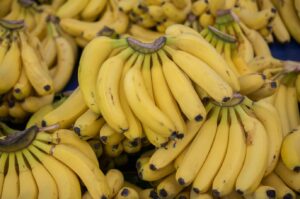
Potassium: The Key Nutrient İn Bananas
As one of the most popular fruits in the world, bananas are widely loved by many. From smoothies to salads, they can be easily incorporated into a variety of meals. However, did you know that bananas are also a great source of potassium? In fact, potassium is considered to be the key nutrient in bananas.
Potassium is an essential mineral that plays a vital role in various bodily functions. It helps to regulate fluid balance, maintain healthy blood pressure levels, and support proper muscle and nerve function.
One medium-sized banana contains around 400-450 milligrams of potassium, which is approximately 10% of the daily recommended intake for adults. This makes bananas a convenient and delicious way to boost your potassium intake, especially for those who may not be getting enough from other sources in their diet.
- In addition to potassium, bananas also contain other important nutrients such as:
- Fiber, which aids in digestion and promotes gut health
- Vitamin C, which supports immune function and skin health
- Vitamin B6, which is important for brain development and overall health
One of the key benefits of getting enough potassium in your diet is its ability to help regulate blood pressure levels. Studies have shown that potassium can help to reduce the effects of sodium on blood pressure, which can lead to a decreased risk of stroke, heart disease and other health problems.
Additionally, consuming foods high in potassium may also help to improve bone health, reduce the risk of kidney stones, and even aid in weight loss. So next time you reach for a tasty snack, consider grabbing a banana to reap its many nutritional benefits.
Bananas As A Natural Energy Booster
Bananas are a popular fruit that is well-loved for their sweet taste and ease of consumption. They are packed with essential vitamins and minerals, making them a popular choice among athletes and fitness enthusiasts as a natural energy booster. Bananas contain carbohydrates, which are an important source of energy for the body. They are also rich in dietary fiber, which helps to slow down the absorption of sugar in the bloodstream, providing a gradual release of energy that can last for several hours.
One of the key nutrients found in bananas is potassium. This vital mineral is important for maintaining a healthy blood pressure and heart function. Potassium also plays a vital role in muscle and nerve function, making it essential for physical activity and exercise. Just one medium-sized banana contains around 400-450 mg of potassium, making it an ideal snack for people who engage in regular physical activity.
- Another benefit of eating bananas is their ability to improve digestion. Bananas are rich in dietary fiber, which can help to promote healthy bowel movements and prevent constipation. The prebiotic fiber found in bananas can also feed the good bacteria in your gut, helping to improve overall gut health.
- The anti-inflammatory properties of bananas make them an ideal food for people with inflammatory conditions such as arthritis. The high levels of vitamin C in bananas can also help to boost the immune system and reduce inflammation throughout the body.
- For those looking to lose weight, bananas can be an excellent addition to a healthy diet. They are low in calories and high in fiber, which helps to promote feelings of fullness and prevent overeating. Bananas are also a great substitute for sugary snacks, which can contribute to weight gain.
When it comes to energy-boosting snacks, bananas are one of the best options available. They are delicious, easy to eat, and provide a natural source of energy that can last for hours. Whether you eat them before or after exercise, or simply as a healthy snack during the day, bananas are a great way to support your overall health and wellbeing.
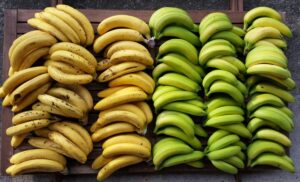
Anti-inflammatory Properties Of Bananas
Bananas are a great fruit to eat daily as they have many health benefits. One of the advantages of eating bananas are it’s anti-inflammatory properties. This is due to the presence of nutrients such as vitamin C, vitamin B6, and fiber that all work together to reduce inflammation in the body.
The presence of vitamin C in bananas plays a crucial role in reducing inflammation. It aids in reducing oxidative stress in the body and maintains the production of collagen which helps heal wounds quicker. Additionally, vitamin B6 helps in strengthening the immune system and regulates the metabolism of amino acids which lowers inflammation. Bananas are also high in fiber that helps in preventing the build-up of toxins which in turn prevents inflammation.
- Reduced inflammation
- Improved wound healing
- Boost immune system
- Prevent build-up of toxins
Bananas are an excellent source of natural anti-inflammatory properties that can help reduce inflammation, promote healthy wound healing, boost the immune system and prevent the build-up of toxins. It should be included in one’s diet, especially for people looking to eat more anti-inflammatory foods.
How Bananas Aid İn Weight Loss
When it comes to weight loss, people often think of foods that are low in calories and high in protein. However, one food item that is often overlooked is the ever-popular banana. Bananas are not only delicious but also packed with various nutrients that can aid in weight loss. Let’s take a closer look at how bananas can help you achieve your weight loss goals.
One of the main ways bananas can aid in weight loss is through their low-calorie content. A medium-sized banana contains only about 105 calories, making it a great snack option for those trying to lose weight. Furthermore, bananas are naturally sweet, so they can satisfy your sugar cravings without adding many calories to your diet.
- Another way bananas can help with weight loss is through their fiber content. A medium-sized banana contains about 3 grams of fiber, which can help you feel fuller for longer periods. This can help prevent overeating and snacking between meals, which can contribute to weight gain.
- Bananas are also an excellent source of potassium. Potassium is a key nutrient that helps regulate fluid balance in the body. When you are dehydrated, your body can retain water, which can make you appear bloated and overweight. However, consuming potassium-rich foods like bananas can help reduce water retention and bloating, which can make you feel and look slimmer.
Finally, bananas can also aid in weight loss by boosting your metabolism. Bananas are rich in vitamin B6, which is essential for a healthy metabolism. A healthy metabolism is crucial for weight loss because it enables your body to burn calories more efficiently.
| Bananas: Helping You Achieve Your Weight Loss Goals |
|---|
| Low in calories and high in fiber |
| Rich in potassium, which helps regulate fluid balance in the body |
| Contains vitamin B6, which helps boost metabolism |
In conclusion, bananas are a fantastic food item to incorporate into your diet if you are trying to lose weight. Their low-calorie content, fiber and potassium content, as well as their ability to boost metabolism, make them an ideal snack or addition to any meal. Just remember, like everything else, moderation is key, and a balanced, nutritious diet is the key to achieving and maintaining a healthy weight.

Bananas And Heart Health: What You Should Know
Bananas are a widely consumed fruit all over the world. They are known for their sweet taste and attractive yellow color. Most people don’t know this, but bananas are great for your heart! The fruit has numerous nutrients that are beneficial to your cardiovascular health. Here’s what you need to know about bananas and heart health!
Bananas are an excellent source of potassium, which is a vital mineral that helps regulate your heartbeat. Potassium also plays a crucial role in reducing blood pressure by counteracting the effects of sodium in your diet. High blood pressure is a major risk factor for heart disease, stroke, and other cardiovascular problems. By consuming bananas regularly, you can help maintain healthy blood pressure levels and reduce your risk of heart disease.
- In addition to potassium, bananas also contain fiber, which is essential for heart health.
- Fiber helps reduce the levels of bad cholesterol (LDL) in your bloodstream, lowering your risk of heart disease. It also helps regulate your digestion, preventing constipation and other gastrointestinal disorders that can impact your overall health.
Another reason bananas are good for your heart is that they contain antioxidants. These compounds help protect your cardiovascular system by reducing inflammation, fighting oxidative stress, and improving circulation. They also help prevent the buildup of plaque in your arteries, which can lead to heart attacks, strokes, and other serious conditions.
| Nutrient | Amount per serving (100g) |
|---|---|
| Calories | 89 |
| Fiber | 3.1 g |
| Potassium | 358 mg |
| Vitamin C | 8.7 mg |
| Carbohydrates | 22.8 g |
There are many ways to incorporate bananas into your daily diet to support your heart health. You can eat them on their own as a snack, add them to smoothies, or use them as a natural sweetener in baked goods. Make sure to choose ripe bananas that are free from bruises or spots. It’s also a good idea to combine bananas with other heart-healthy foods, such as nuts, berries, and dark chocolate.
In conclusion, bananas are a delicious and nutritious fruit that can improve your heart health in numerous ways. They are rich in potassium, fiber, and antioxidants, which help reduce blood pressure, lower cholesterol levels, and prevent cardiovascular disease. By consuming bananas regularly as part of a balanced diet, you can support your overall health and well-being.
Bananas İn Traditional Medicine
Bananas have been an important food source for humans for centuries, and have been used in traditional medicine in many cultures. The fruit is native to tropical regions of Southeast Asia, but is now grown in many parts of the world. Bananas are high in potassium, fiber, and vitamins C and B6, making them a nutritious food to incorporate into your diet. But did you know that bananas have also been used for their medicinal properties?
One of the most well-known traditional uses of bananas is for treating gastrointestinal issues. Bananas are high in pectin, which helps to regulate digestion and soothe stomach ulcers. In fact, mashed bananas are often recommended as a home remedy for diarrhea and other digestive ailments.
- Bananas have also been used in Ayurvedic medicine to treat heartburn and acid reflux.
- The high antioxidant content of bananas has been shown to have anti-inflammatory effects, making them beneficial for reducing swelling and inflammation in the body.
In addition to their gastrointestinal benefits, bananas have been used in traditional medicine to treat a variety of other ailments. Here are just a few examples:
- Bananas are believed to have a cooling effect on the body in many Asian cultures, and are used to treat fevers.
- The high potassium content of bananas has been shown to reduce blood pressure, making them beneficial for people with hypertension.
- In Africa, banana leaves are often used to treat burns and other skin conditions.
- Bananas have also been used to boost energy and fight fatigue.
While bananas are not a substitute for professional medical treatment, they can be a helpful addition to your diet and natural medicine toolkit. Consider incorporating more bananas into your meals and snacks to take advantage of their many health benefits.
Banana Cultivation And Production
Bananas are one of the most widely consumed fruits in the world. However, not many know about the process of banana cultivation and production. The cultivation of bananas is a complex process that involves careful monitoring of the crop from the time it is planted until the time it is harvested.
The banana plant is grown in tropical regions where the climate is warm and humid. It requires rich soil that is well-drained, and a significant amount of rainfall throughout the year. The plant grows from a rhizome and produces new shoots called suckers. These suckers are used to propagate new banana plants.
- In some countries, the banana industry has become a significant source of income for small farmers who grow bananas for export.
- Bananas are harvested when they are fully mature but still green in color. The fruit is then washed to remove any dirt and debris before it is graded according to size and quality.
- Once the bananas are graded, they are packed into boxes or crates for transport to markets or ports where they are shipped to other countries.
Banana production from one country to another varies depending on the type of banana cultivar grown and the agricultural practices implemented. For example, some banana farms use packaging materials such as plastic bags to wrap the banana bunches to protect them during transportation. Others might use organic, eco-friendly practices such as using compost to fertilize the soil and diversifying crops to promote all levels of ecosystem health.
| Country | Production | Export Value (USD) |
|---|---|---|
| Ecuador | 6.47 million tonnes | 2.79 billion |
| Philippines | 2.92 million tonnes | 1.23 billion |
| India | 2.73 million tonnes | 864 million |
Today, bananas are grown in more than 130 countries, making them one of the world’s most traded commodities. They are a vital part of the global economy and a significant source of food for millions of people. It’s important to understand the process of banana cultivation and production to support sustainable practices in the banana industry.
Banana Varieties: A Global Overview
When it comes to bananas, many people might think of the common yellow Cavendish variety found in most grocery stores. However, there are actually many different types of bananas grown around the world. In fact, bananas are one of the most popular fruits worldwide, with over 100 billion bananas consumed every year. Here is a global overview of some of the most popular banana varieties you might come across.
One common type of banana is the plantain. Unlike sweet bananas, plantains are starchy and firmer, and are often used in savory dishes. They are a major staple food in many African, Caribbean, and Latin American countries. The Gros Michel, also known as the “Big Mike,” was once the most commonly grown banana in the world. However, it was largely replaced by the Cavendish after it was decimated by a fungus.
- The Lady Finger banana is a smaller, sweeter banana that is often sold in markets in Asia and Australia.
- The Red banana has a reddish skin and is sweeter than the Cavendish.
- The Blue java banana, also known as the “Ice Cream” banana, has a creamy texture and vanilla-like flavor.
In addition to these types, there are many other banana varieties grown in various parts of the world, such as the Burro, which is popular in Mexico, and the Apple banana, which is common in Hawaii. Each variety has its own unique flavor and texture, and is often used in different types of cuisine.
| Banana Variety | Flavor Profile | Main Growing Regions |
|---|---|---|
| Gros Michel | Mild, sweet | Central America, Southeast Asia |
| Cavendish | Mild, slightly tart | Central and South America, Southeast Asia |
| Red banana | Sweet, fruity | South America, Caribbean |
| Plantain | Starchy, not very sweet | Central and South America, Africa, Caribbean |
No matter what variety of banana you prefer, there’s no denying that this versatile fruit is both tasty and nutritious. Whether you eat them on their own, bake them into bread or use them in smoothies, bananas are a great way to add natural sweetness and important nutrients like potassium to your diet. So why not try out a new variety and expand your banana horizons?
Creative Uses For Overripe Bananas
Have you ever found yourself with a bunch of overripe bananas that you don’t know what to do with? Don’t throw them away just yet! There are plenty of creative uses for these overly mushy fruits that will not only prevent wastage, but also delight your tastebuds.
1. Banana bread: This classic use for overripe bananas is a crowd favorite. There are so many variations of banana bread, from the traditional to the more experimental – such as chocolate banana bread or even savory forms with herbs and cheese.
2. Smoothies: Blending overripe bananas into smoothies is a delicious way to use them up. They add natural sweetness and creaminess, making for a luscious texture in your drink. Try combining with other fruits, nut butters, and yogurt or plant-based milks.
- Tip: Peel ripe bananas and put them in the freezer to use later in smoothies or as a base for banana ice cream.
3. Pancakes: Mash overripe bananas and mix them into pancake batter for a fruity twist on a breakfast staple. Banana pancakes are especially tasty topped with maple syrup or chocolate chips.
4. Baked goods: Bananas can also be incorporated into a variety of baked goods, such as muffins, cookies, and cakes. The moisture and sweetness of the fruit work well in these desserts, and you can play around with different combinations of ingredients to find your perfect recipe.
- Tip: Try using mashed bananas in place of eggs or butter in vegan baking recipes.
5. Face mask: Lastly, bananas are not just a food – they can also be used as a natural beauty product! Mash up an overripe banana and apply it to your face as a quick and easy homemade mask. The fruit is packed with vitamins and minerals that can help moisturize, soothe, and brighten your skin.
| Benefits of overripe bananas: | Ways to use them up: |
|---|---|
| Bananas have a higher concentration of antioxidants and beneficial nutrients when overripe. | Banana bread, smoothies, pancakes, baked goods, face mask. |
| The high levels of sugar can make them perfect for sweet treats and desserts. | Try making banana cookies or cakes. |
| They are more easily digestible when overripe, making them a good option for people with gut sensitivities. | Use overripe bananas in smoothies or banana bread for a gentle fiber boost. |
So next time you have a few spotty bananas lying around, get creative with how you use them up. Not only will you prevent food waste, you’ll also discover some delicious new treats and beauty routines.
Banana Recipes From Around The World
Bananas are one of the most versatile and beloved fruits in the world. Not only are they delicious and easy to eat on their own, but they can also be used in a myriad of recipes from around the globe. Here are some of the most popular and mouth-watering banana recipes from different parts of the world.
- Banana Fritters from the Caribbean: These sweet treats are made by combining mashed ripe bananas with flour, sugar, spices, and milk, and then deep-fried until golden and crispy. They can be served with a drizzle of honey or maple syrup for extra sweetness.
- Indian Banana Curry: In this savory dish, sliced green bananas are cooked with onions, tomatoes, spices, and coconut milk until tender and fragrant. It can be served with rice or flatbread for a satisfying meal.
- Banana and Peanut Butter Smoothie from the Americas: This creamy and rich smoothie is made by blending ripe bananas with peanut butter, milk, honey, and ice. It can be a great breakfast or snack for busy days.
Besides these classics, there are many other ways to incorporate bananas into your meals and snacks. For example, you can try:
- Adding sliced bananas to your morning cereal or yogurt for a boost of flavor and nutrition.
- Baking banana bread, muffins, or pancakes using overripe bananas for a moist and tender texture.
- Grilling or caramelizing bananas for a dessert that is both simple and sophisticated.
- Mashing bananas and mixing them into your favorite smoothie, cake, or ice cream for a natural sweetness and richness.
As you can see, bananas are truly a wonder food that can be enjoyed in many different ways, depending on your taste, culture, and creativity. So the next time you have some ripe bananas on your hands, don’t just peel and eat them – try one of these delicious banana recipes from around the world!
Sustainable Practices İn The Banana İndustry
The humble banana is one of the most popular fruits in the world, with billions of them cultivated and consumed each year. However, with such high demand comes significant challenges for the banana industry, including environmental impact, labor rights, and economic sustainability. In recent years, there has been a growing movement towards sustainable practices in the banana industry, aimed at addressing these challenges and ensuring a brighter future for everyone involved in the cultivation and production of this beloved fruit.
One of the key areas of focus for sustainable practices in the banana industry is reducing the environmental impact of banana farming. This involves adopting more ecologically-friendly methods of cultivation, such as using natural pest control methods, reducing water usage, and implementing renewable energy sources. Additionally, sustainable practices aim to reduce the amount of waste produced by banana production, through composting and recycling programs.
- Another important aspect of sustainable practices in the banana industry is ensuring fair labor practices and workers’ rights. This includes ensuring fair wages, providing safe and healthy working conditions, and establishing collaborative partnerships with workers and their communities. Sustainable practices aim to empower workers, promoting long-term economic stability and reducing poverty.
- Sustainable practices also aim to promote economic sustainability, ensuring a fair and stable income for farmers, suppliers, and other stakeholders involved in the banana industry. This involves establishing strong supply chains, promoting responsible trade practices, and investing in sustainable infrastructure and technology.
At the heart of sustainable practices in the banana industry is a commitment to holistic and collaborative approaches, seeking to balance economic, environmental, and social factors to create a better future for everyone involved. By adopting sustainable practices in the banana industry, we can enjoy delicious and nutritious bananas while also promoting a healthier planet, stronger communities, and more equitable economic systems.
| Benefits of Sustainable Practices in Banana Industry | |
|---|---|
| Reduced environmental impact through ecologically-friendly farming methods. | |
| Ensuring fair and safe working conditions for farmers and workers. | |
| Promoting economic stability and sustainability for all stakeholders. | |
| Empowering communities and reducing poverty. |
In conclusion, sustainable practices in the banana industry are essential for promoting a more equitable, healthier, and resilient world. As consumers, we can make a difference by choosing to support sustainable banana production and advocacy efforts. By doing so, we can help create a better future for all, one delicious banana at a time!
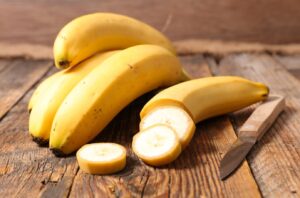 Health Benefits Of Eating Bananas
Health Benefits Of Eating Bananas